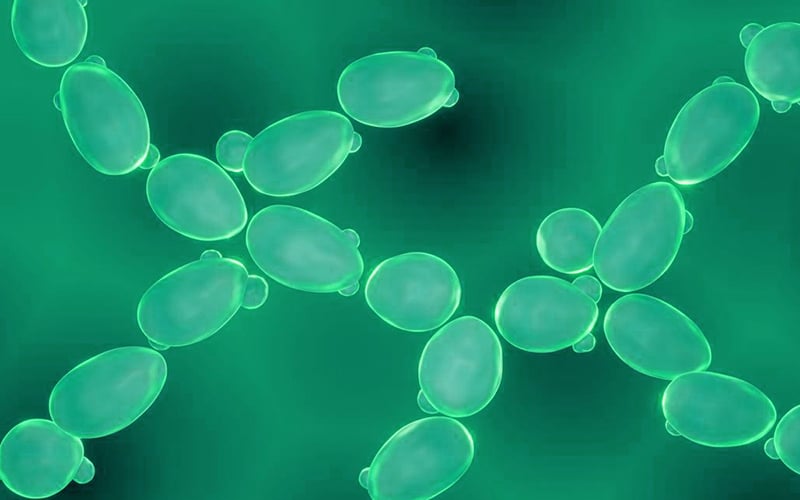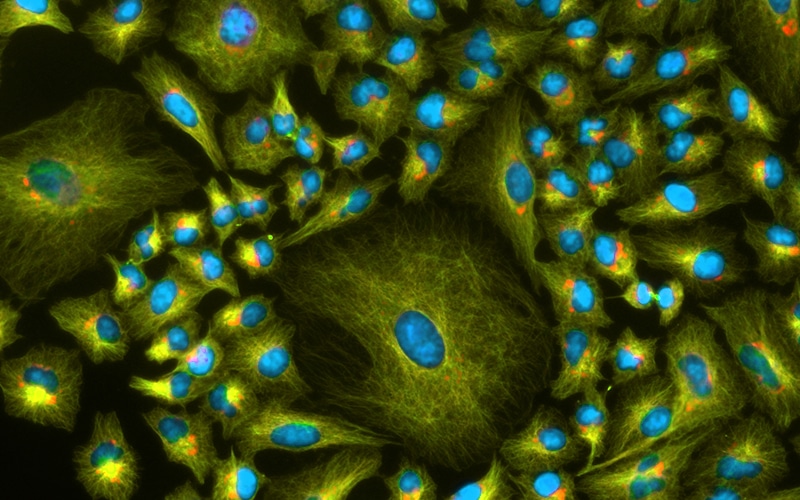Yeast Protein Expression
QYAOBIO provides different yeast protein expression for customers in worldwide
Yeast strains are extremely useful for the expression and analysis of eukaryotic proteins. Yeast protein expression systems are ideal for large-scale production. Prokaryotic expression is a mature and easy operation, but once come to proteins of eukaryotic organism, the error folding will occur frequently.
Yeast expression systems are suitable for many posttranslational modifications with well-characterized genetics. It grows quickly in defined culture medium. In addition, yeast cells are easy to use, and less expensive than mammalian cells.
Yeast Expression System
Yeast is the simplest eukaryotic expression system. It allows easy culture and scale-up production at low cost, meanwhile sustains post-translational modifications and proper folding of eukaryotic proteins. This system is also able to produce membrane protein, and many recombinant transmembrane proteins. Such as: chicken bestrophin-1, human aquaporin 2, mouse P-glycoprotein.
QYAOBIO has developed different yeast expression vectors for the efficient production of heterologous proteins. We normally apply Saccharomyces. cerevisiae and Pichia. pastoris expression systems.
Pichia pastoris the most common yeast species for recombinant protein expression, it is a species of methylotrophic yeast. The culture of P. pastoris is simple and inexpensive, it can grow fast, reach high cell density, and support high-yield and large-scale production. Furthermore, P. pastoris is recommended for expression of glycosylated or disulfide-bonded proteins. Profacgen have expression vectors with strong promoters to support either secretion or intracellular production of target proteins.
Saccharomyces cerevisiae is the best-understood eukaryotic species, it is applied in making wine, bread and beer. This yeast have the ability to ferment various carbohydrates, and inability to apply nitrate.
Yeast Expression Process
Yeast protein expression system is the most economical eukaryotic system for both secretion and intracellular expression. It is ideal for large-scale production of recombinant eukaryotic proteins. The common process of our yeast expression process including:
- Codon optimization
- Protokaryon cloning
- Screening of expression strains
- Protein expression
- Protein purification
Yeast Expression Vectors
Human protein expression in prokaryotes has limitation, since prokaryotes don’t have compartmentalized secretion system like eukaryotes. Therefore, alternative systems with lower eukaryotes become very important. Similar as prokaryote, yeast expression systems also require origin of replication or integration, the strong promoter, the selection marker. There are three type of vectors in S. cerevisiae system: integration vectors (YIp), centromeric plasmids (YCp), episomal plasmids (YEp) .

Yeast Integrating plasmids (YIp)
The YIp (yeast integrating plasmids) integraive vectors cannot replicate autonomously, but integrate into the genome by homologous recombination at low frequency. Integration of circular plasmid DNA leads to the copy of the vector sequence, then flank by two direct copies of the yeast sequence. Normally, YIp vectors integrate as the single copy. For over-expressing specific genes, YIp plasmids have two yeast segment, YFG1 and URA3 marker, they can integrate at either genomic loci. Whereas vectors can integrate at any multiple sites with genome.
Yeast Centromere plasmids (YCp)
YCp (yeast centromere plasmid) vectors are autonomously replicating vectors with centromere sequences (CEN), and autonomously replicating sequences (ARS). The copy number of YCp vectors are very low from 1 to 3per cell. Since these vectors are relatively unstable, they are not useful in high level expression, but as regular cloning vectors.
Yeast Episomal plasmids (YEp)
The YEP (yeast episomal plasmids) vectors replicate autonomously. Since the segment of the yeast 2 μm plasmid serves an the origin of replication, it is also responsible for the high copy-number and high frequency of transformation. Even under selective growth conditions, most YEp plasmids are relatively unstable, only 60 to 95 percent of cells retain the YEp plasmid. Most YEp plasmids can contain copy number from 10 to 40 copies per cell. Normally, this system is applied for small scale expression studies, not advisable in large-scale manufacturing.
Yeast selection Markers
Yeast selection markers are normally classify into two types: complementation markers, dominant selection markers.
- Dominant selection markers are antibiotic markers in yeast, such as G418 and cycohemamide.
- Complementation marker are marker genes which complement the auxotrophicmutation in the genome. Such as URA3, TRPI, HIS3, LEU2. These auxotrophic markers are applied in selection of three expression systems: integration, episomal, and centromeric plasmids.
Yeast Expression Methods
QYAOBIO provides high quality and considerate yeast express services with more than 16 years’ experience. Our protein expression and purification can effectively save your cost and time. Prokaryotic expression system is mature and easy to operate. However, once comes to protein expression of eukaryotic organism, there is high frequency in error folding. Fortunately , the Pichia pastorisis system is complementary to this situation in certain extent.

Traditional Pichia Expression Systems
The Pichia expression system is the most cost-effective eukaryotic system for both secretion and intracellular expression. It is ideal for large-scale production of recombinant eukaryotic proteins. Pichia systems apply stable and durable production strains for high-yield, high-productivity processing.
Pichia pastoris is a methyltrophic yeast, it can grow to high cell density in the defined medium. Therefore, pichia expression systems are capable for high level of recombinant gene expression in the tightly controlled promoter, involves several post-tranlational modifications by higher eukaryotes.
Optimized Pichia expression
QYAOBIO also provides new Pichia expression systems containing both low and high copy plasmid backbones, 8 secretion signal sequences, and 4 yeast strains. This will optimize the possible yield of required recombinant proteins.
Call Us
+86(021)-50795728
+86(027)-60707970
